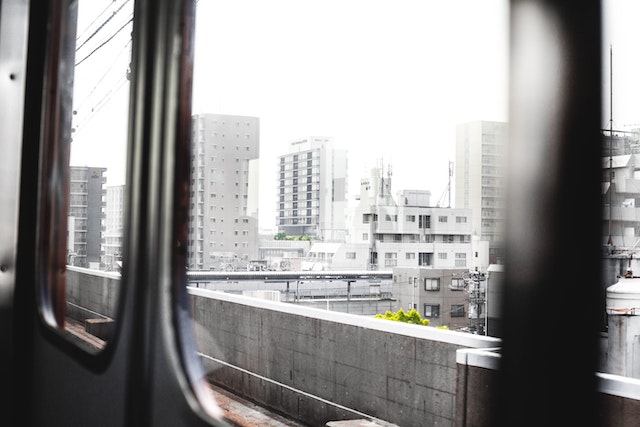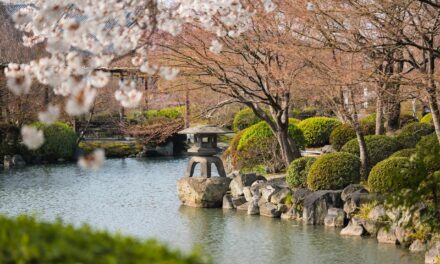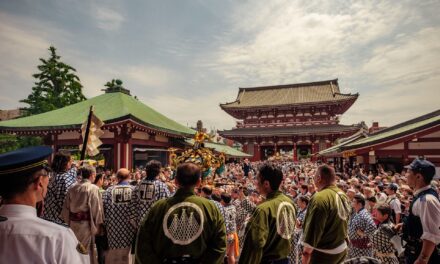The saying goes: “When in Rome, do as the Romans do.”
Japan is a country rich with culture and history, and this has developed into many different societal norms.
Most of these societal norms are not common in Singapore, and there are many tips I wish I knew before I visited Japan for the first time.
Here are 23 tips you should know now before travelling to Japan
Land at Haneda Airport
There’s one thing I wish I knew when I first visited Japan was to land at Haneda airport instead of Narita Airport.
It may seem like a small difference to most people, but there’s more to it than meets the eye.

Duration of journey :
Narita Airport to Tokyo Station: 1 hour
Haneda Airport to Tokyo Station: 35 minutes
As I was ignorant of the difference during my first trip to Tokyo, naturally, I picked Narita Airport because I thought it was the standard route everyone took.
Since Narita is located in the Chiba prefecture, travelling to Tokyo prefecture would be longer than it would be if you had landed at Haneda airport.
There is a way to shorten the duration of the journey from Narita airport to Tokyo – which is taking the Skyliner train – but it would cost you about JPY$2500, and is not covered in the JR Pass ticket.
Adding to the headache of the first-time traveller, you have a multitude of choices: By Highspeed train, Regular Train, or Limousine bus.
At Haneda airport, it’s a straightforward process, which is to take the regular train to the city centre of Tokyo or wherever your accommodation is located at.
On my second trip to Japan, I chose to land at Haneda airport instead, and it was a lot simpler and quicker compared to landing at Narita Airport.
Cost of trip :
Narita Airport’s route: JPY$900 – JPY$2870 (or covered by Japan Rail Pass Ticket holders)
Haneda Airport’s route: JPY$470 (or covered by Japan Rail Pass Ticket holders)
Haneda airport is definitely the more economical choice for the first-time traveller and it also simplifies your decision-making process with only 1 option to choose from – besides taking a Taxi.
Wear comfortable shoes
When you’re in Japan, chances are you’ll be walking a lot. I was walking around the tourist sites on average for about 7 hours a day.
There were so many places to cover and not only are these places a little far from the train stations but walking in the massive train station is a workout in and of itself.
There’s just so much to see in Japan by foot, and the parks can span for kilometres.
Additionally, there are many stairs to climb too, so it’s a huge consideration to be prepared for the amount of walking you’ll be partaking in.
Thank goodness I wore my sneakers with great foam technology to cushion my strides because it would’ve been disastrous if I had worn regular shoes with no padding on them.
It would be beneficial for you to wear your jogging shoes or sneakers with foam paddings in them like the Adidas NMDs or in my case the Adidas Tubular – for your convenient reference.
Even though I walked so much during the trip, it was all worth it for the sceneries and sights – also, to burn off the calories from all those delicious Japanese foods.
Internet connection
Internet connection by Cellular data is great in Japan. You could get the roaming package from your Telco for a relatively cheap price, or you could purchase a travel sim card from a vending machine in the airports.
Internet speeds in the major cities in Japan are relatively quick and rarely had I faced any issues when I was staying there.
The only time I faced internet issues was when I was in Hokkaido. Upon touching down at Hakodate airport, I switched on my phone, but I was greeted with the cursed “No data” signal on my phone screen.
To make matters worse, I was travelling alone, so I had to rely on my instincts and memory to reach my Airbnb accommodation in the town of Hakodate, which is quite a distance away from the airport.
Thankfully, when I arrived in the town area, I went to a nearby mall and used the Free Wifi that was available. After contacting my telco, my roaming data was back online and my journey continued as planned.
There are plenty of Free Wifi spots throughout Japan, so internet connection shouldn’t be an issue when you’re travelling there.

Stick to carrying cash
As advanced as Japan may be – with all the high-tech robotics and advanced software they have developed – most places in Japan only accept cash payments.
Using credit card payments can be seen as an inconvenience to some shops, and using cash would be highly recommended to purchase by using cash whenever possible.
However, in recent times, there has definitely been a shift towards the Cashless society movement in Japan.
This is great news for travellers, but it’s not exactly widely accepted.
If you’re not already familiar with the Suica Card, the Suica card is one of the standard transportation cards in Japan.
You’ll need one of these cards to travel around Japan, and in some cases pay for items in vending machines and convenience stores.
There is the Suica application that allows you to use your phone as a Suica card, so you can make cashless payments to some extent in Japan using apps.
Regardless, it’s best to carry cash with you when you’re travelling in Japan.
Bring a coin pouch with you
I wish somebody had told me to bring a coin pouch when I first travelled to Japan; most of the time your payments will come with change, and the change will often be in coins.
Because of that, it would be a lot more convenient to carry a separate coin pouch with you to store coins instead of jamming the coins into your wallet.
If you did so, you’ll notice that your wallet would be extra bulky by the third day of your travel to Japan.
Not only do you have to dig your small coin compartment in your wallet for the smaller coins, but you would also have people behind you waiting for you while you hold up the line.
The coin pouch would save you in this situation. It’s a lot more convenient and with the spacious storage of the pouch, you can take out your coins with ease.
Be mentally prepared to have a chunk of coins when you’re in Japan – and when you leave Japan.

Do not tip in Japan
The tipping culture in Japan is strange to most people.
In Japan, if you tip someone, it can often be seen as impolite because society expects top-level service in the first place.
It can be seen as an impolite gesture to tip the waiters or taxi drivers even though they had been a great help to you – and there will be plenty of times they will be helpful to you.
Instead, it is highly recommended to show your gratitude with actions and words such as giving them a lower bow of respect or thanking them profusely.
You’ll see their faces light up when you acknowledge their deeds, and it makes them happier when you enjoyed your stay in Japan – which is why Japanese hospitality is impeccable.
Do not eat and walk at the same time
This is a lesser-known fact to most travellers, and it may seem trivial to most people, but you should avoid eating and walking at the same time.
This cultural norm has been around for many years and most Japanese do not appreciate people who walk and eat at the same time.
It is perfectly fine to eat in public spaces and it is also all right to eat while you’re standing in a corner.
The only exception to this silent societal rule is when you’re participating in a festival; you’ll see many people eating and walking there.
Learn basic Japanese phrases
This is by far one of the most crucial ideas that most people should take note of. Learning basic Japanese will make your travel to Japan more pleasant.
Besides the standard phrases, you’ll probably be familiar with such as:
- Konnichiwa (Hello)
- Arigatou Gozaimasu (Thank you[Polite])
- Sayounara (Goodbye)
Some helpful phrases will make your life easier when you’re in Japan. These are :
- Sumimasen (Sorry/Excuse me)
- Ikura desu ka (How much is this?)
- Eigo ii desu ka [eh go ee des ka?] (Can we converse in English?)
- Kore kudasai (Can I have this, please?)
- Wakarimasen (I don’t understand.)
Although these phrases may be sufficient for simple communication, it’s important to learn basic Japanese to be able to hold a conversation with the people serving you.
When they can see that you’re giving it your best to communicate with them in Japanese, they will often do their best to help you as much as they can.
Most Japanese can understand simple English, but only if you don’t put them in sentences. Use simple English phrases to get your message across.
Once I was in a Ramen store in Harajuku, Tokyo, which had many tourists around. Despite there being many tourists in the area, the shop owners mainly communicate in Japanese.
I was able to place my order with the waitress, but a problem struck when she asked how I wanted my noodles to be done.
I had forgotten the Japanese word for “hard”, so I tried to say hard in the most Japanese way I could, “Haa-do”.
She furrowed her brows and gave me a bewildered look which translates to “I have no idea what you’ve just said.”
Thankfully, I remembered the phrase “Osusume wa nan desu ka”. This phrase means “what do you recommend?”, and – regardless of her answer – I would reply “Hai, onegaishimasu”, which means “I’ll have that, please!”
Do not miss the last train
Fortunately, Japan’s train system runs all the way to midnight, so you’ll have plenty of time to plan your trip back to your accommodation; however, it is important to keep within the last train timing because your only other option after the last train is taking the taxi.
Taxis in Tokyo are notorious for their exorbitant prices. Along with the pricing, the distance from your location to your accommodation can be far apart. It’s not surprising for a trip from central Tokyo to the Ota district to cost around Jpy$7000 – $8000.
You may have other alternatives like staying in a Manga cafe overnight, or you could check into a capsule hotel for the night if you’ve missed the last train, so it’s not all doom and gloom.
The earliest train is usually 5 am, so travellers who enjoy the nightlife of Japan must keep a mental note of this.

Avoid rush hours whenever you can
Japan’s trains are notorious for their rush hours. During these hours, the trains can be extremely packed and you’ll find yourself sandwiched in the train – if you even get to enter.
Not only are the train carriages squeezy, but you would have to queue up to get into the congested train.
These queues can be relatively long and this may ruin your plans if you’re unaware of it.
The typical rush hour time last between 7 a.m to 9 a.m on weekday mornings and 5 p.m to 7 p.m on weekday evenings.
These periods are often packed with salarymen and women and it is unpleasant to be in, so plan your itinerary carefully.
Women-only train carriages
If you have no other option but to travel during rush hours, it is vital to note that there are carriages catered to female passengers.
This is for their general safety, so it’s a useful tip if you feel that travelling during rush hours is unsafe for you.
You can identify these carriages by the stickers on the floor on the train platform; it will indicate a “women-only carriage” and only women are allowed in these carriages during the designated hours.
Avoid talking loudly on trains
Talking loudly on the train is frowned upon in Japan.
The train has seen as a place where most people can have some peaceful rest time before reaching their destination and this is why they treasure the silence in trains.
You can talk in trains, but it is encouraged to refrain from talking.
If you wish to talk to your friends on the train, it’s best to keep the volume low as much as possible, or you may have a few passengers staring at you.
Additionally, avoid talking on your phone during the transit; this irks many passengers and if you were to observe the locals who do receive calls on the train, they would often tell the caller to call back or excuse themselves by leaving at the next stop.
Download the Japan train app and trust it
Japan is renowned for its superb efficiency when it comes to locomotive travel; its schedule is always right on the dot and this is consistent every day.
With their well-trained staff who take their job dutifully, it is no wonder their trains are world-class.
You can safely rely on train applications to plan your trips in Japan.
Not only do they tell you the distance and travel time, but you would also know the exact time that the train will arrive at your station.
It is a norm for the Japanese to plan their trips using the application because the trains are almost always on time.
When I was in Japan, I used “Japan Travel” and it served me well throughout my stay there.
It was helpful and it made navigation a breeze even though the train system in Japan is complex.
Take note of the train station exits
Before you plan to exit the train station you’ve just arrived at, it’s important to view which exit you should be taking.
In Japan, most train stations are wide and complex; it is common to see a train station with multiple exits and these exits are spaced out far apart.
Choosing the wrong exit may add an additional 5 – 10 minutes to your schedule – as well as walking around in detours.
These exits are often labelled with alphabets, so observe the maps before you begin your journey out of the station.
Bring a hand sanitiser or small pocket shampoo
When I was in Japan, it was relatively difficult to find a soap dispenser in the toilets.
Although the toilets are often clean and neat, there are many toilets without soap dispensers.
This is probably due to the Japanese locals carrying disinfecting wet wipes or sanitisers already.
I was carrying a pocket-size sanitiser to keep my hands clean most of the time.

Tattoos are a taboo
Even though Japan has moved away from its taboo of Tattoos, it is still a sensitive topic to most Japanese.
There are certain places where people with tattoos are prohibited from entering, such as the hot springs and public baths.
This restriction dates back many years.
Because the establishments wanted their customers to feel safe from the Yakuza members, it made sense to disallow people with tattoos from entering these facilities.
If you have tattoos, ask the receptionist if you are allowed to enter to place instead of assuming that it is all right to do so.
You may be politely declined from entering these establishments and this is to give their customers ease of mind, and not to be taken personally.

Rubbish bins are rare
You may find it difficult to find a rubbish bin in Japan even though Japan is one of the cleanest countries in the world.
There are many reasons why this is the case.
In the past, Japan had deadly attacks which caused many people to be injured.
This enforced the idea of reducing the number of rubbish bins to prevent or reduce these attacks from happening again.
Also, the Japanese are generally law-abiding citizens and it is frowned upon to litter there.
It is usual for the locals to carry their rubbish with them until they can find a rubbish bin to dispose of their trash.
You may be expected to do the same as well.
Get ready to sort your Rubbish
This may come as a shocking fact to most people: Japan has a strict rule about separating waste.
There are various categories to remember :
- Combustible
- Incombustible
- Cans
- Glass
- Plastic
This is important when you’re staying in your accommodation as you may find yourself questioning if the garbage you’re about to throw is combustible or incombustible.
This is difficult at first, but you’ll get the hang of it in no time.
It’s also a great lesson on recycling, and it makes you aware of the rubbish you’re throwing away.
Don’t touch the Taxi doors
In the case when you’re travelling by taxi, you don’t have to open the doors of the taxi.
All of the doors of the taxi are controlled by the driver, so you need not do anything but hail the taxi.
This also applies to exiting the taxi; in most cases, the taxi door will open automatically by the taxi driver before asking for your fare.
If you noticed that the doors are not open, you could open them yourself but you don’t have to close them after because the taxi driver will do it for you.
In most cases, the taxi doors will be opened for you.

Unexpected restaurant practices
There are some unusual restaurant practices that you may encounter, and it is helpful for you to know so you can expect them when it happens.
Mandatory side dish in bars
There are bars – also known as Izakaya – that will put a mandatory side dish on your table even though you didn’t order it.
This is relatively common in most bars in Japan but not all bars do this.
This side dish is known as Otoshi, and this practice dates back a long time ago.
The reason for this practice is the cover the cost of people not ordering much and drinking very little which hogs up space for other potential customers.
You will not have any control over what side dish you will be receiving so it can be adventurous or a waste depending on your outlook.
However, this is part of the Japanese culture and embracing it can give you a glimpse of what the Japanese way of life is like.
Ordering using a vending machine
This is one of the common practices that may be unusual for people who have not been to Japan before.
You’ll often find a vending machine at the entrance of the restaurant and it can be confusing for first-timers.
Here’s how you order from the vending machine:
- You insert your money
- Click on the dish that you want to order
- Your ticket will drop out of the dispenser
- Click the refund lever to eject the remaining change
- Pass the order ticket to the assistant
Once you’ve gotten your order ticket, you hand it over to the assistant and she will show you to your seat.
You should always order something
It is common practice for you to order something when you enter a restaurant or a cafe even if you’re not planning to eat.
This will certainly puzzle many people because some people may not be hungry or thirsty and they may want to accompany a friend for dinner.
As usual, this is to cover the cost of occupying that seat, so it’s important to accept this norm as part of the Japanese experience.
Overnight buses are helpful
This applies to tourists who are travelling to multiple cities in Japan. One of the problems that people who travel to many cities face is travel time.
Some of the travelling time can be a few hours long and this may be seen as a waste of time to some travellers; however, there is an efficient way to overcome this issue: overnight buses.
Inter-city overnight buses are a common mode of transport for Japanese and tourists; even though it is slower to travel by bus from one city to another, you will be saving on accommodation costs.
During your 5-hour journey from Tokyo to Nagoya, you can sleep on the bus throughout the journey and arrive at your next destination in the morning.
Overnight buses in Japan are spacious and there are premium seats which extend into beds.
Eating alone is normal
Don’t be afraid to eat alone in Japan because it is a societal norm to be eating alone in restaurants, cafes and fast-food restaurants.
All over Japan, you’ll notice that in most places, you’ll likely find a few people eating alone.
Some people might be shy about eating alone – especially in Singapore – so it’s great news for people who are solo-travelling because most people wouldn’t notice that you’re eating alone.
Always carry your passport with you
Although it is common practice to always carry your passport with you, there may be some who choose to leave it in their hotel room.
It may be rare for police to check your passport during their patrol, but it is a chargeable offence if you don’t have your passport with you.
Also, there are many benefits to having your passport with you, so as receiving tax refunds when you spend more than JPY$5000.
- Which of the 23 points surprised you the most?
Write your thoughts in the comment section below, and share this with your friend who is going to Japan!
This would definitely help them a lot!










